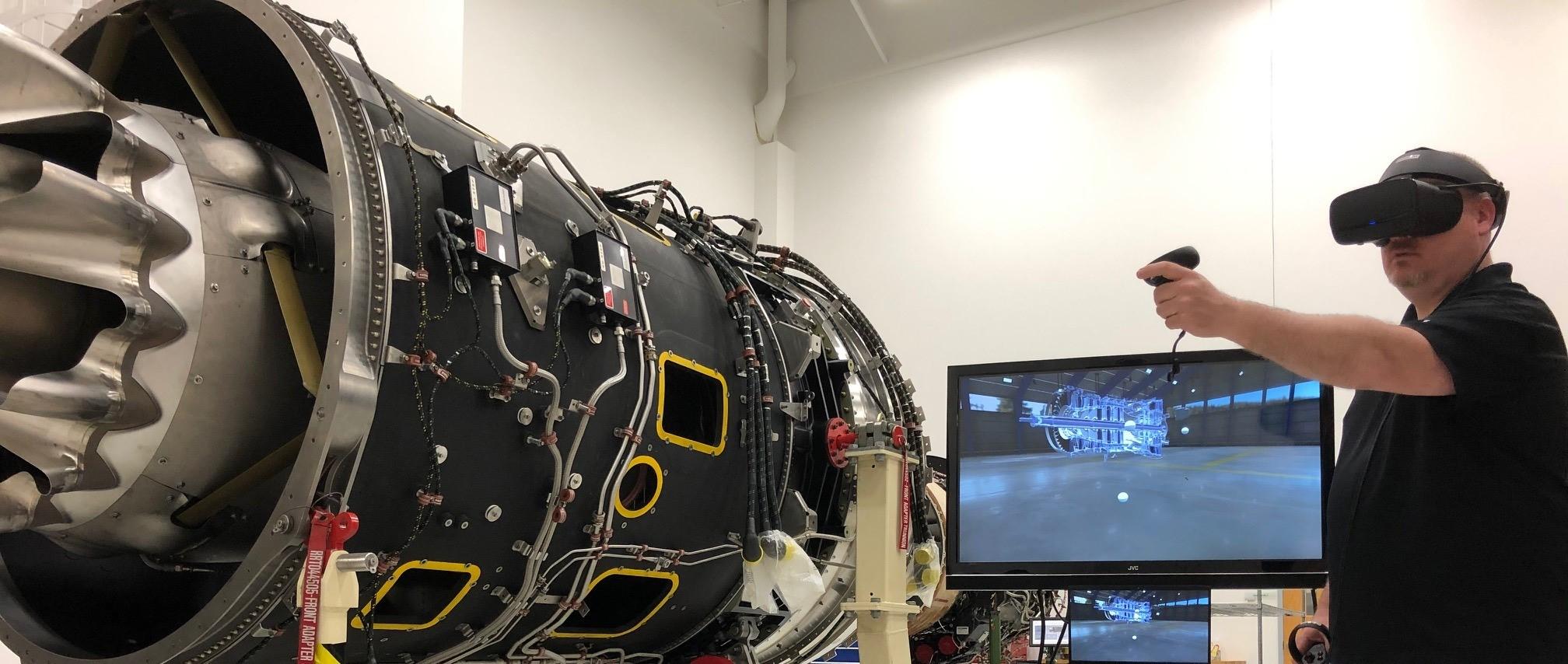
Spurred by the COVID-19 pandemic, Rolls-Royce launched what it believes is the first travel-free, fully immersive virtual reality training course for its business jet engines on May 4, 2020.
Three technicians at the flight department of an Atlanta-based customer spent two days familiarizing themselves with maintenance on the BR725 engine that powers the Gulfstream G650 while the instructor worked remotely from Rolls-Royce’s headquarters in Indianapolis.
In the past, Rolls-Royce would ship an actual engine for the course, and the instructor would travel to the location. The new classroom requires just a computer, and special 3D goggles for each participant.
“We can conduct an engine walkaround, take components off, view their installation, and even examine the side of the engine the you may never see, all in 3D,” says Andy Robinson, senior vice president of services for business aviation at Rolls-Royce. “We can take off the fan disk and fan case, spin the fan around and show the trainees how it is mounted, along with alignment marks. This is really cutting edge; we don’t believe anyone in the world has developed immersive virtual reality training like this before.”
The mobility of the system, savings in travel time and the safety of staying at base have already found appeal. “Others are requesting it,” says Robinson, including Rolls’ Authorized Service Center in Dubai.
While virtual reality (which Rolls-Royce already uses for engineering and engine development) may play a greater role in training, it won’t replace the full maintenance courses that Rolls-Royce offers on site.
Meanwhile the engine company is gearing up for a renewal in business aviation activity as the crisis begins to lift.
“We’ve been brainstorming,” says Robinson. Expectations are that business aviation will lead the recovery in air transportation as borders begin to open, and it could bounce back even more strongly than before. At the same time, maintenance operations cannot be as efficient with technicians wearing protective clothing and practicing social distancing. Spares stockpiles must be organized to assume that freight and shipping services won’t immediately return to normal, and that parts for de-preservation of aircraft will be needed to accelerate customers to flight.
“We’re working on all these issues,” Robinson says.
He adds that many operators are preparing for a strong recovery. As flight hours of business jets plummeted 85% in March from January and February, proactive maintenance activity picked up. “It peaked when most aircraft were on the ground,” he says, suggesting that operators want their aircraft ready when the time comes.
More than 800 BR725s are in service powering ultra-long-range G650 and G650ER aircraft; the engines recently topped one million flight hours since first delivery in 2012.





